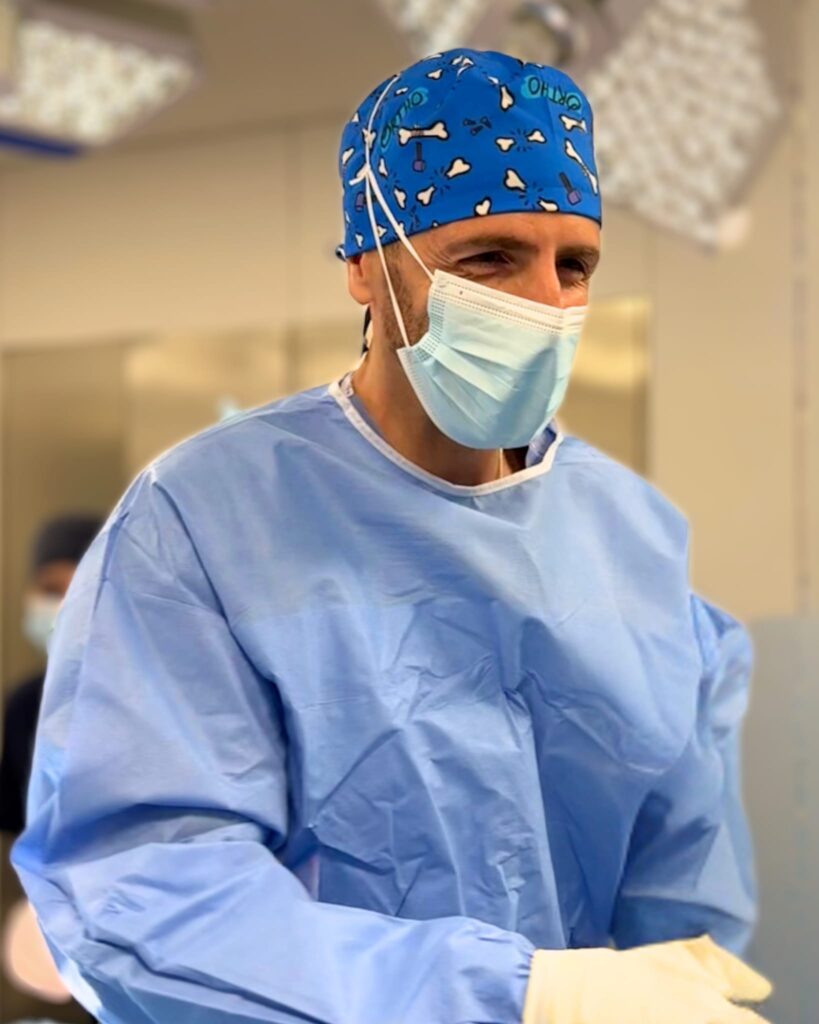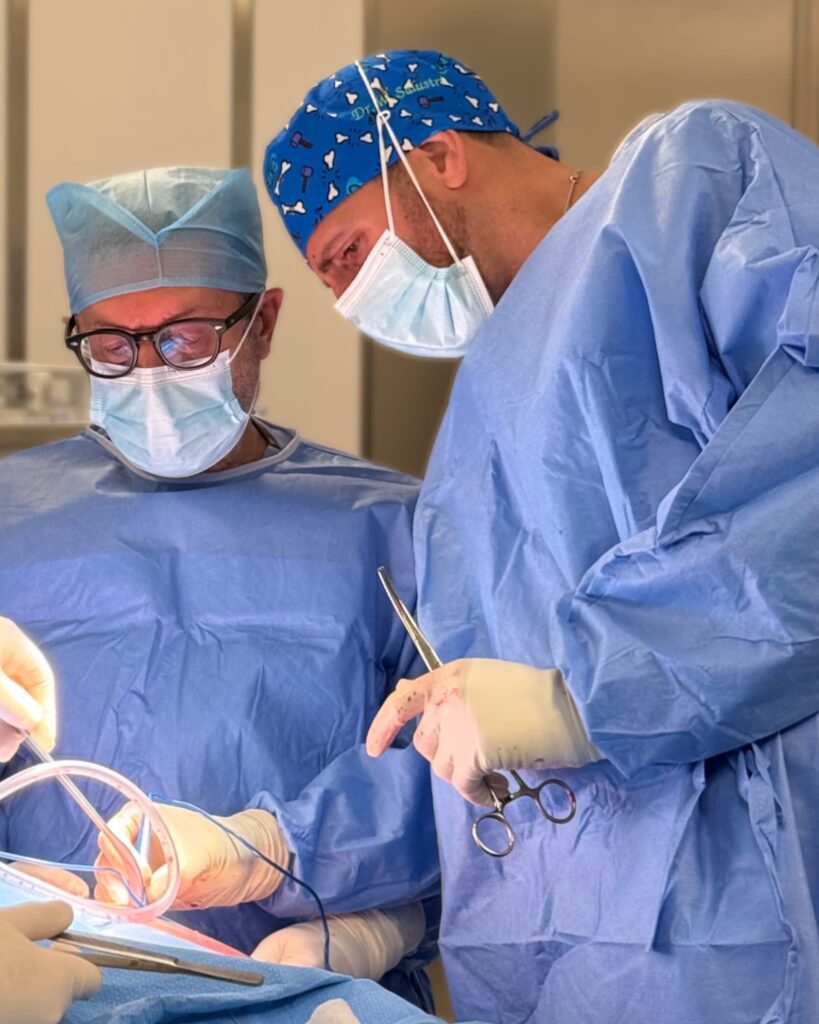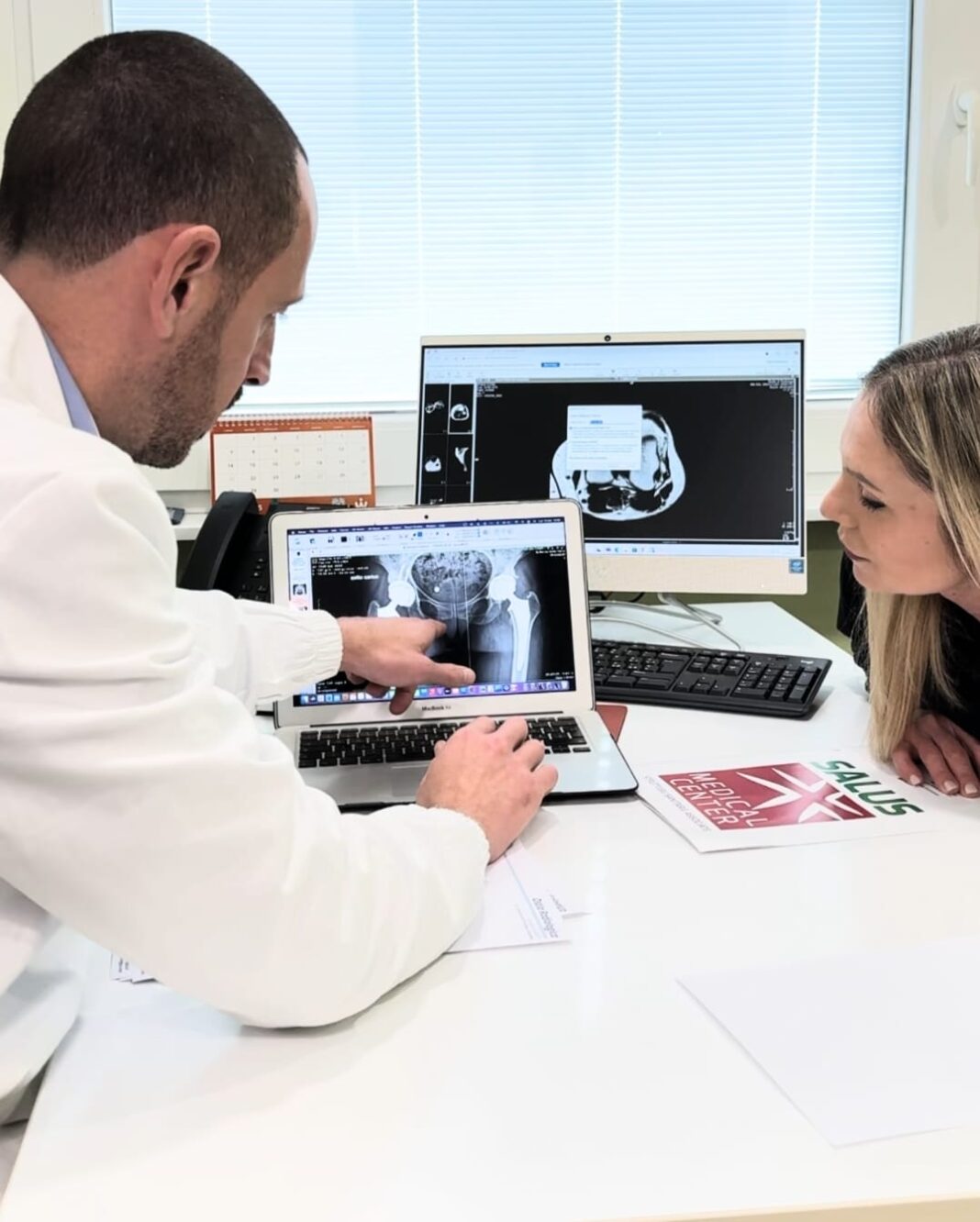In recent years, hip replacement surgery has made tremendous strides. One of the most innovative techniques is the minimally invasive anterior approach with a “bikini” incision — a method designed not only to ensure excellent functional outcomes but also to minimize aesthetic impact. “Today, patients don’t just want to feel better — they want to recover quickly, experience less pain, and have smaller, more discreet scars that can be hidden by underwear. The ‘bikini’ technique fully meets these expectations,” explains Dr. Walter Salustri, an orthopedic and trauma surgery specialist with over 1,000 hip replacements performed in top centers such as Policlinico San Donato in Milan, Villa Salaria in Rome, and Clinica Di Lorenzo in Avezzano.
By Roberta Imbimbo

Dr. Salustri, what exactly is the anterior “bikini” technique?
It’s an innovative surgical approach that involves a small, oblique skin incision along the natural crease of the groin, which greatly reduces the aesthetic impact. The scar is small and hidden — a significant advantage, especially for young and active patients. But it’s not just about aesthetics: it’s a minimally invasive procedure that preserves muscles and tendons, reducing surgical trauma.
Can the procedure be performed on both hips at once?
Absolutely! One of the most interesting aspects of this technique is that, for selected patients, it’s possible to operate on both hips during a single surgical session (bilaterally). This means one anesthesia, one hospital stay, and simultaneous recovery — reducing overall rehabilitation time and enabling a quicker return to an active life.
What are the concrete benefits for patients?
Compared to traditional surgery, the bikini technique offers numerous advantages: shorter procedures, less blood loss and no need for transfusions; faster recovery — patients can walk from the very first day after surgery; less pain and swelling; no external stitches; and lower risk of dislocation and infection. Often, patients can be discharged within two days, resume driving in two weeks, and return to a normal life in a remarkably short time. Furthermore, independence is preserved from the start: no long-term use of crutches and no dependence on others.
Who is a candidate for this type of surgery?
The technique is suitable for everyone, regardless of sex or weight, and is indicated for both advanced osteoarthritis and femoral neck fractures. It is especially recommended for those seeking a fast recovery and who have high aesthetic or functional expectations — such as young and athletic individuals.

Are there any risks or complications?
Every surgical procedure carries some risk, but complications with the bikini approach are significantly reduced compared to traditional techniques. However, the success of the surgery largely depends on the surgeon’s experience and the choice of materials. Today, prosthetics specifically designed for this approach are used — ceramic heads (durable, biocompatible, and long-lasting) and titanium components that adapt perfectly to the patient’s anatomy. In conclusion, with more than 600,000 hip replacements performed globally each year, having access to less invasive, more precise techniques with nearly invisible scars represents a major advancement. The anterior “bikini” approach is proving to be a cutting-edge solution that significantly improves patients’ quality of life and recovery times.
For more information: https://www.waltersalustriortopedico.it/






















































